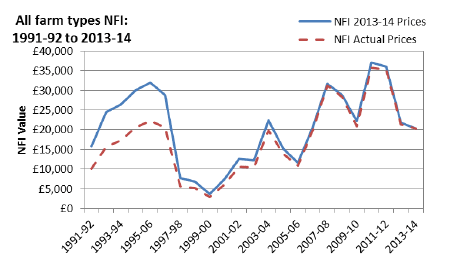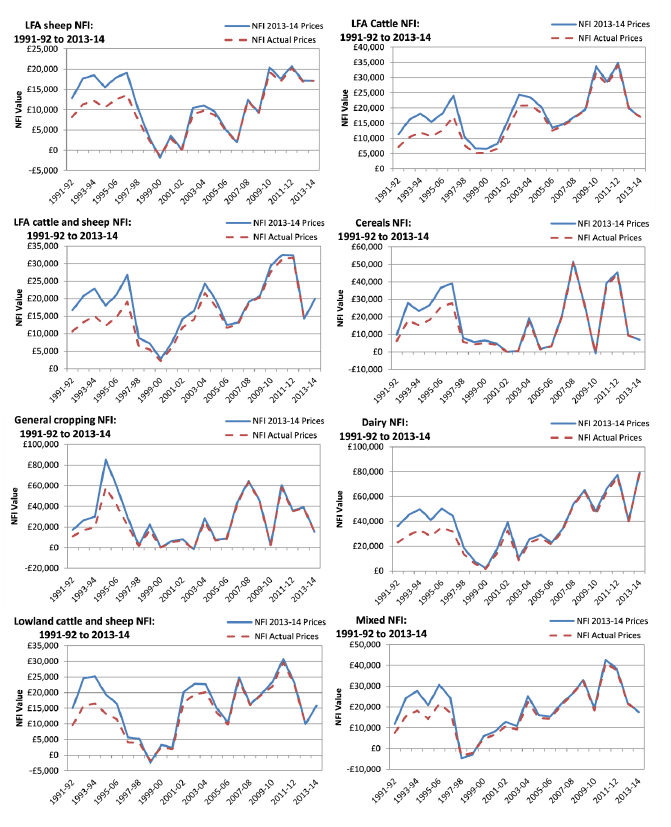Scottish farm business income: annual estimates 2013-2014
This publication contains farm business level estimates of average incomes for the accounting year 2013-14, relating to the 2013 crop year. For the most recent data, visit the Scottish farm business income (FBI) collection page below.
This document is part of a collection
6. Long term trends - Net Farm Income (NFI) (Table 11)
While FBI is the headline business-level measure of farm income, it is a relatively new measure of income and only allows comparisons over the last four years. Net Farm Income (NFI) has a much longer time series available for comparing income levels and examining trends. This measure places all farms on a tenanted basis, with imputed rent costs applied to owner occupiers. It is quite a different measure from FBI, estimating the return only to the farmer and spouse for their managerial input to the farm business.
Looking at the general trend over the last 20 years in actual prices, for the average over all farm types, suggests that, while farm incomes are subject to a considerable level of fluctuation, they have more than tripled between 1997-98 and 2010-11. Farm incomes were at their lowest between 1997-98 and 2000-01, during the time of the ban on beef exports following outbreaks of bovine spongiform encephalopathy (BSE), a strong pound and weak world commodity prices.
Figure 11 - NFI in actual and 2013-14 prices

However, when accounting for inflation the picture is quite different. When the time series is converted into 2013-14 prices - the equivalent value of incomes in today's economy - we see that the decline in farm incomes in the mid-1990s was more severe and was followed by a slower recovery. Trends vary by farm type, but the general trend described above is witnessed across all farm types.
Long Term Trends - Net Farm Income by farm type

Contact
Email: agric.stats@gov.scot
There is a problem
Thanks for your feedback